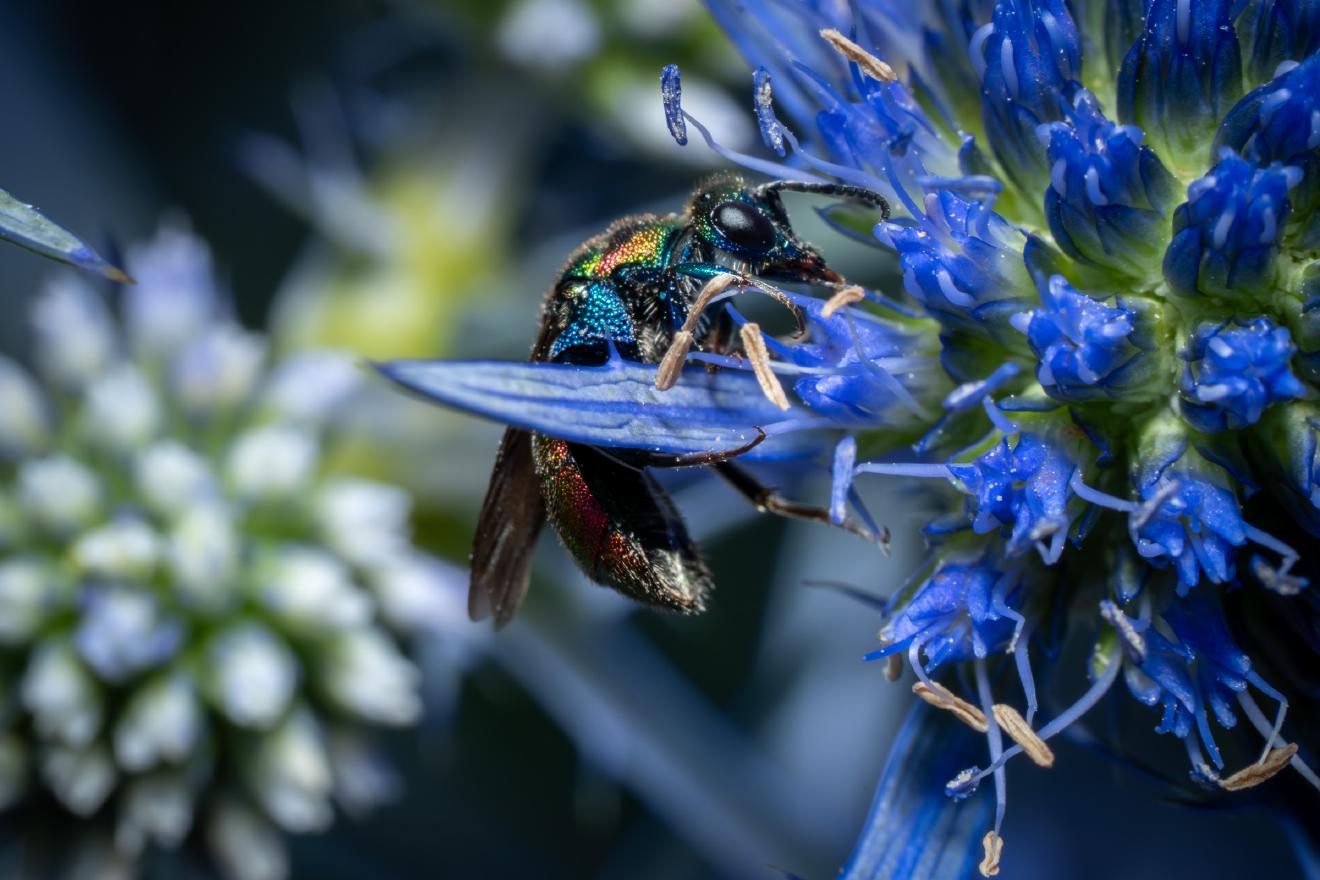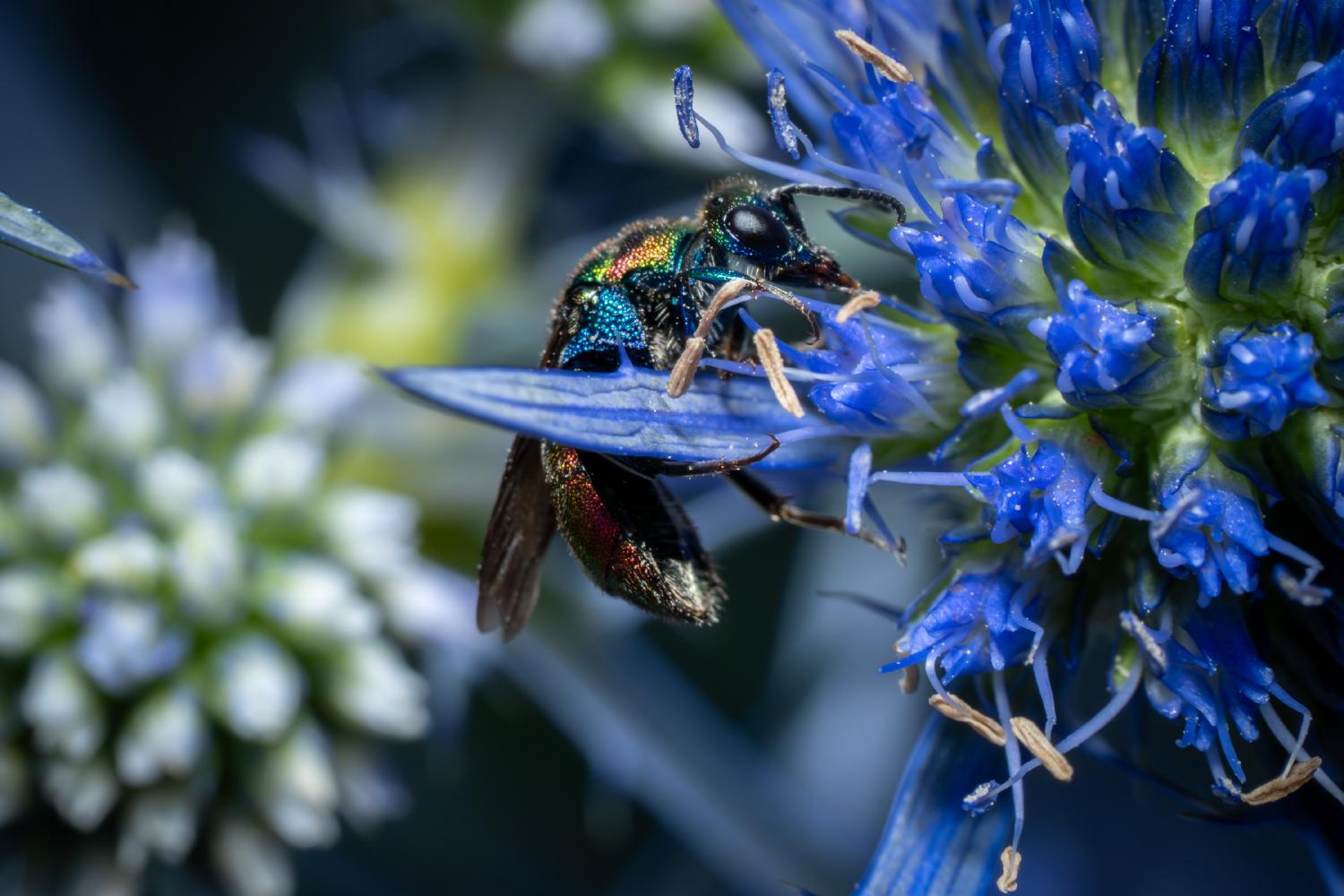Chrysis ignita
Lat. “Chrysis ignita“
species
of family
“Cuckoo Wasps“
1 species
Chrysis ignita is a chrysidid wasp with a colorful, metallic exoskeleton and a reduced stinger used as an ovipositor. It can be identified by its distinctive ruby-colored abdomen and textured exoskeleton. These wasps are found in various habitats including walls, cliffs, and areas with dead wood. They are believed to parasitize potter wasp species, but many of the host records are considered doubtful due to misidentifications. Field studies can be conducted using traps or by breeding host wasps in the hopes of observing parasitization. Some specialized Chrysis species have evolved chemical mimicry to infiltrate the nests of their hosts, matching the scent profile of the host wasp to remain undetected.
Taxonomy and phylogeny
Chrysis ignita is a chrysidid wasp with a typical colorful, metallic exoskeleton; the stinger is reduced in size and used as an ovipositor.
Description and identification
Chrysidids differ from other aculeate wasps (stinging Hymenoptera) in their reduction of the number of external body segments, the presence of 11 antennal articles, and wing veins enclosing 5 cells. Chrysis ignita is the best known of a group of very similar ruby-tailed wasps. The head and thorax range from a shiny green to blue, sometimes layered with a golden sheen. The abdomen, a deep ruby color, is its most distinctive feature. The exoskeleton sculpture appears textured, like a golf ball, with dimples, projections, crests, and holes ranging from micrometric to millimetric in size.
Distribution and habitat
Chrysis ignita can be found in Britain and Ireland, in continental Europe, and through Russia to China and Japan at the eastern edge of the Palearctic. Its habitats overlap with those of its hosts, and thus it can be found near walls, quarries, bare cliff faces, and around dead wood in sunny places. Since chrysidids are solitary wasps whose lives are linked to and dependent on their hosts, they live in strict microhabitats. These microhabitats can be further categorized as places of rest and of parasitic activity. The environments in which they are found facilitate their identification and are often characterized by flowers, arid and sandy soil, old wood exposed to sunlight, pebbles, and aphid infested plants.
Known hosts
The hosts of Chrysis ignita sensu stricto are believed to be potter wasps such as Ancistrocerus parietum. Chrysis ignita has been alleged to parasitize a wide variety of wasps and bees. However, most of these host records, including all those of bee species, are considered doubtful: attributable to misunderstandings, misidentifications, and taxonomic inconsistency.
Methods of field study
As with other species, study may proceed using a Malaise trap, the more basic Moericke trap, or simply hunting on sight. Alternatively, nests of host wasps can be bred in the hope that some will be parasitized by Chrysis ignita.
Chemical mimicry
Host-parasite interactions are prime examples of evolutionary arms races. The host evolves methods of detecting the parasite, and the parasite counters by evolving methods of evasion. It has been reported in some specialized Chrysis species that the cuckoo wasp chemically camouflages itself when infiltrating the nest of its host. Field observations indicate that the cuckoo wasp is only attacked when the host wasp visually recognizes it. If the cuckoo wasp can make it into the nest in the dark, research has shown that it can disguise itself chemically by secreting saturated and unsaturated hydrocarbons to match the scent profile of the host wasp. In these situations, even when the host wasp encounters the cuckoo wasp head on in the dark, the cuckoo wasp remains undetected.
== References ==


Ancestry Graph
Further Information
Copyright

This article uses material from the Wikipedia article Chrysis ignita the free encyclopedia Wikipedia which is released under Creative Commons Attribution-ShareAlike 4.0 International License). On Wikipedia a list of authors is available.
